Canberra & NSW travel blog part 2: Canberra to Wagga
Canberra to Wagga
Day 4 and 5: Wagga Wagga

Our second destination on this week’s trip was Wagga Wagga, which, according to Visit NSW, is the largest island city in NSW, sitting on the Murrumbidgee River.
It’s on Wiradjuri country.
A sign at the visitor centre tells us that the meaning of ‘Wagga Wagga’ is not entirely certain.
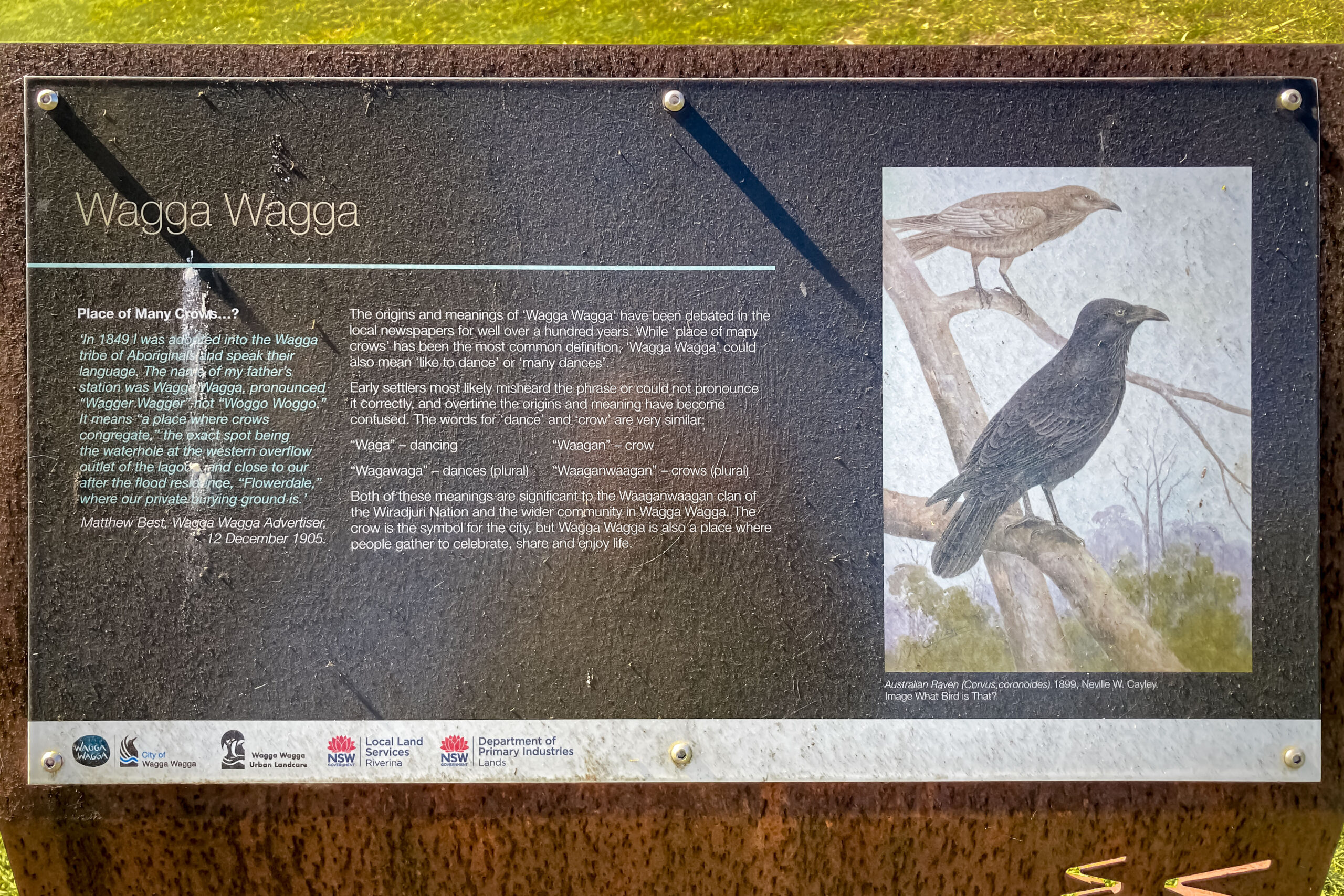
‘Place of many crows’ is one definition, derived from the Wiradjuri word waagan (crow). But the name could also be derived from the word waga/wagawaga (dance/dances). And it’s very hard to know for sure when the language has been transcribed by early settlers in the area, and largely lost due to policies that destroyed so many First Nations languages.
There’s been a lot of work done in recent years to reclaim and reconstruct the language but this is never easy work when the original speakers are no longer around.
I’d only been to Wagga once before, almost exactly ten years ago. That trip involved catching a train from Sydney, walking a long way to find the car rental office, and leaving the city before we’d seen any of it. So I was interested to explore in the short time we’d be there.
We stayed with friends who we’d last seen five years ago. It was nice to not be in a small motel room, and their house is absolutely wonderful.
A morning in Wagga
I set out a for walk the next morning before anyone else was awake.
Our friends’ house is close to the Wollundry Lagoon, where I saw (and heard) a massive flock of cockatoos that took off as I got closer.
Ducks and geese? This place also has many many of them.
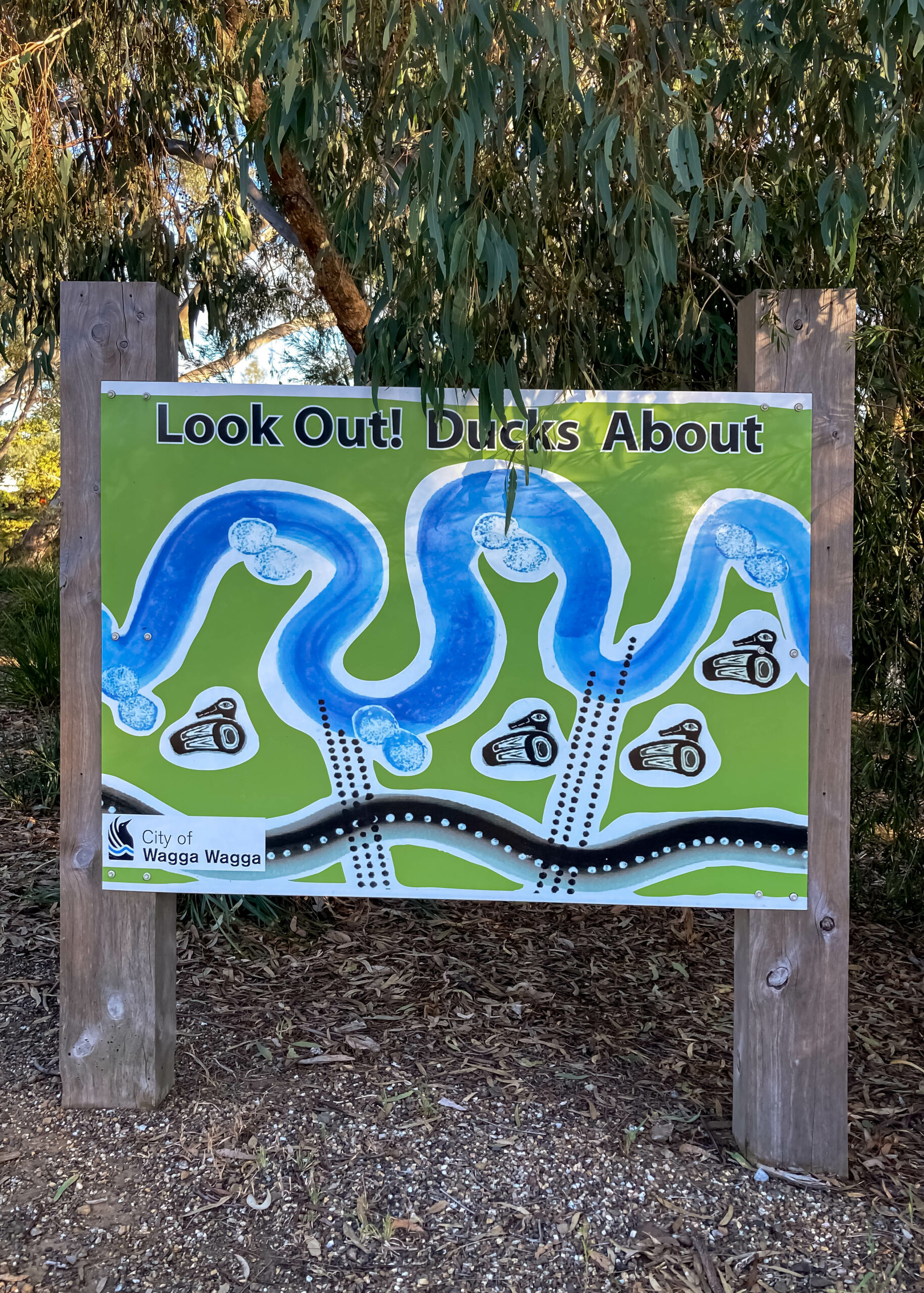
Beautiful as the lagoon was, my goal was to explore some of the city centre streets and look at the buildings.
I wasn’t disappointed. Except for where there was a car parked in front of something I particularly liked.
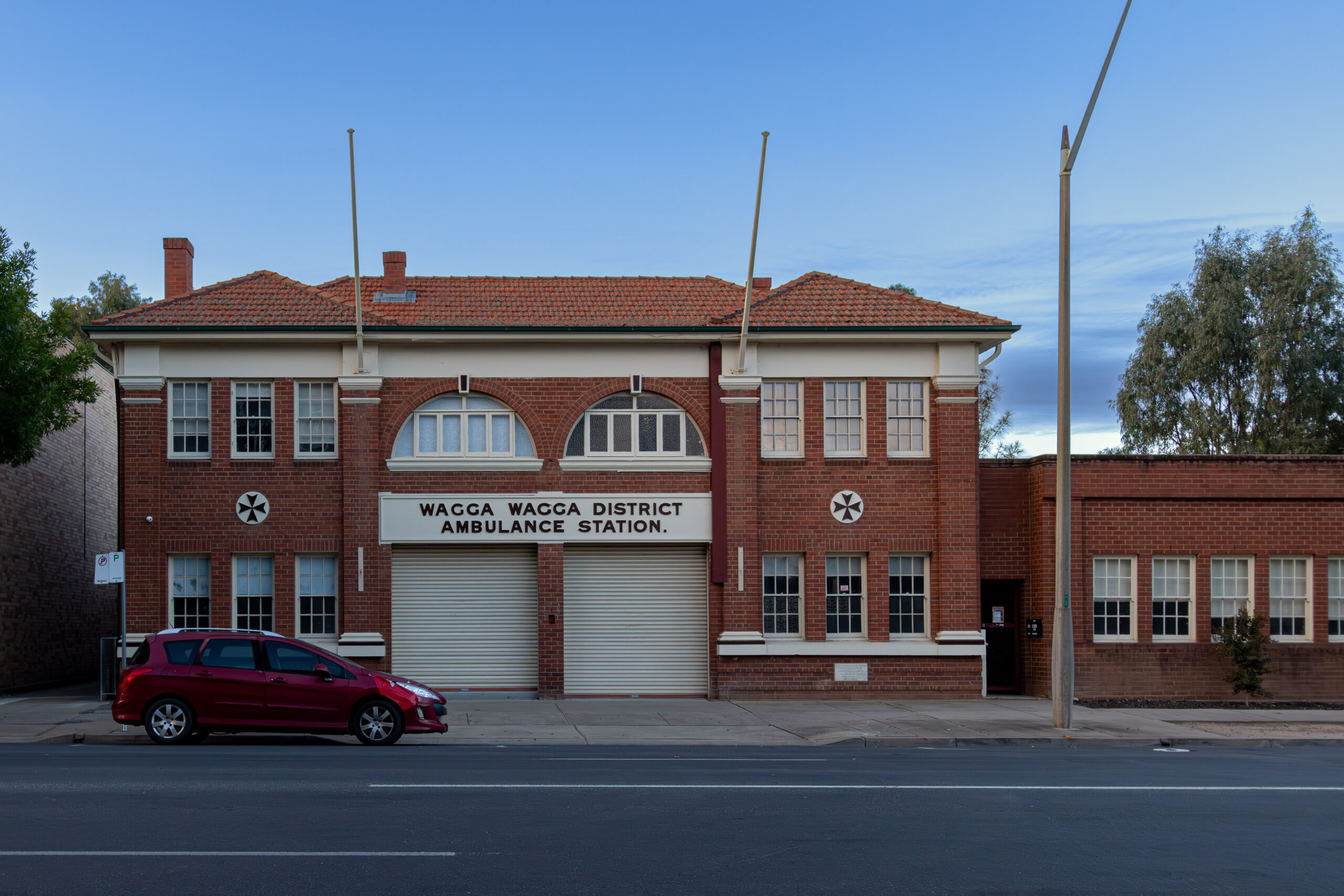
Or they were renovating.
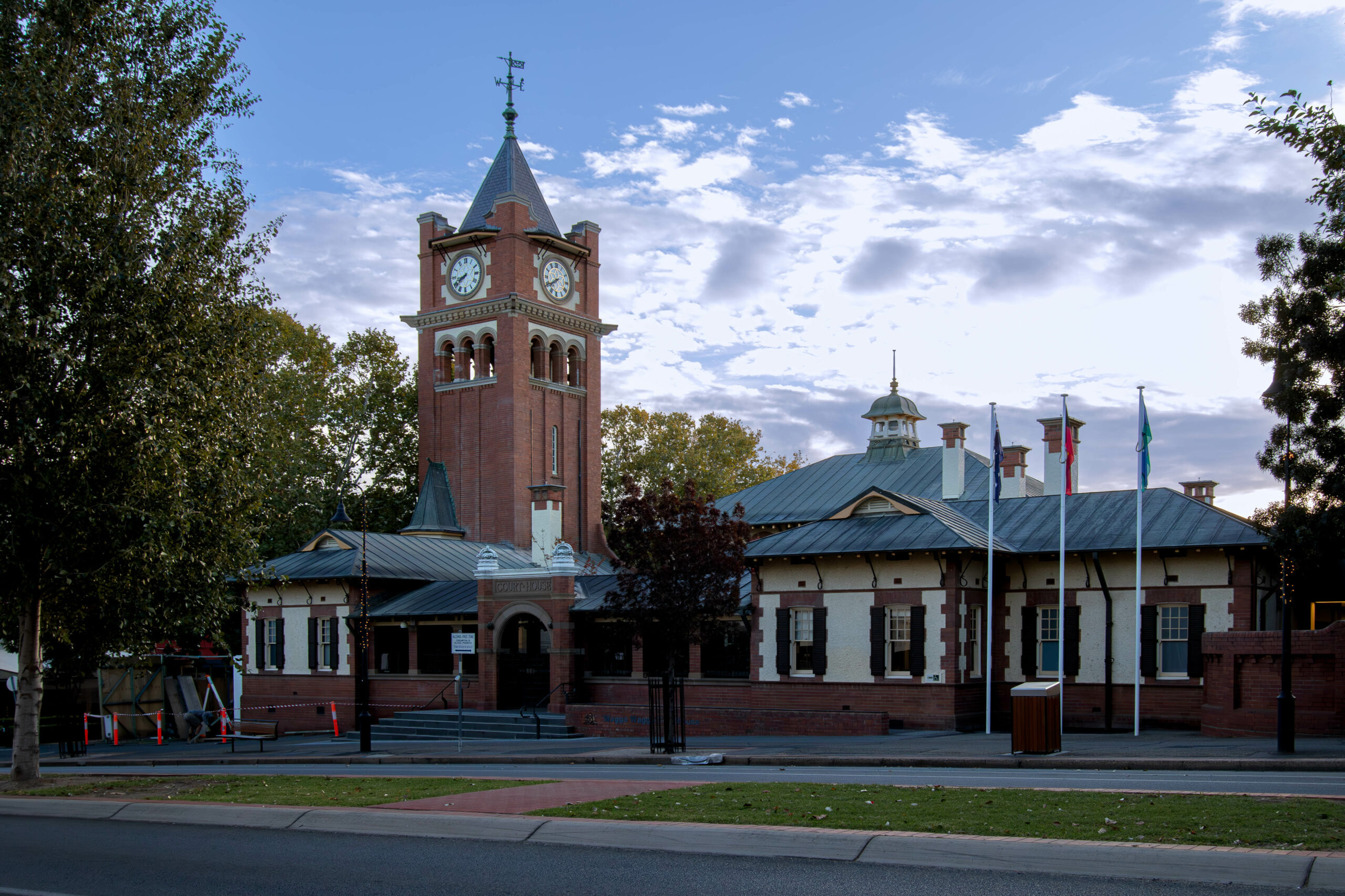
It was cool to see the 2WG neon sign (installed 1936, restored 2020) even if it wasn’t lit up.
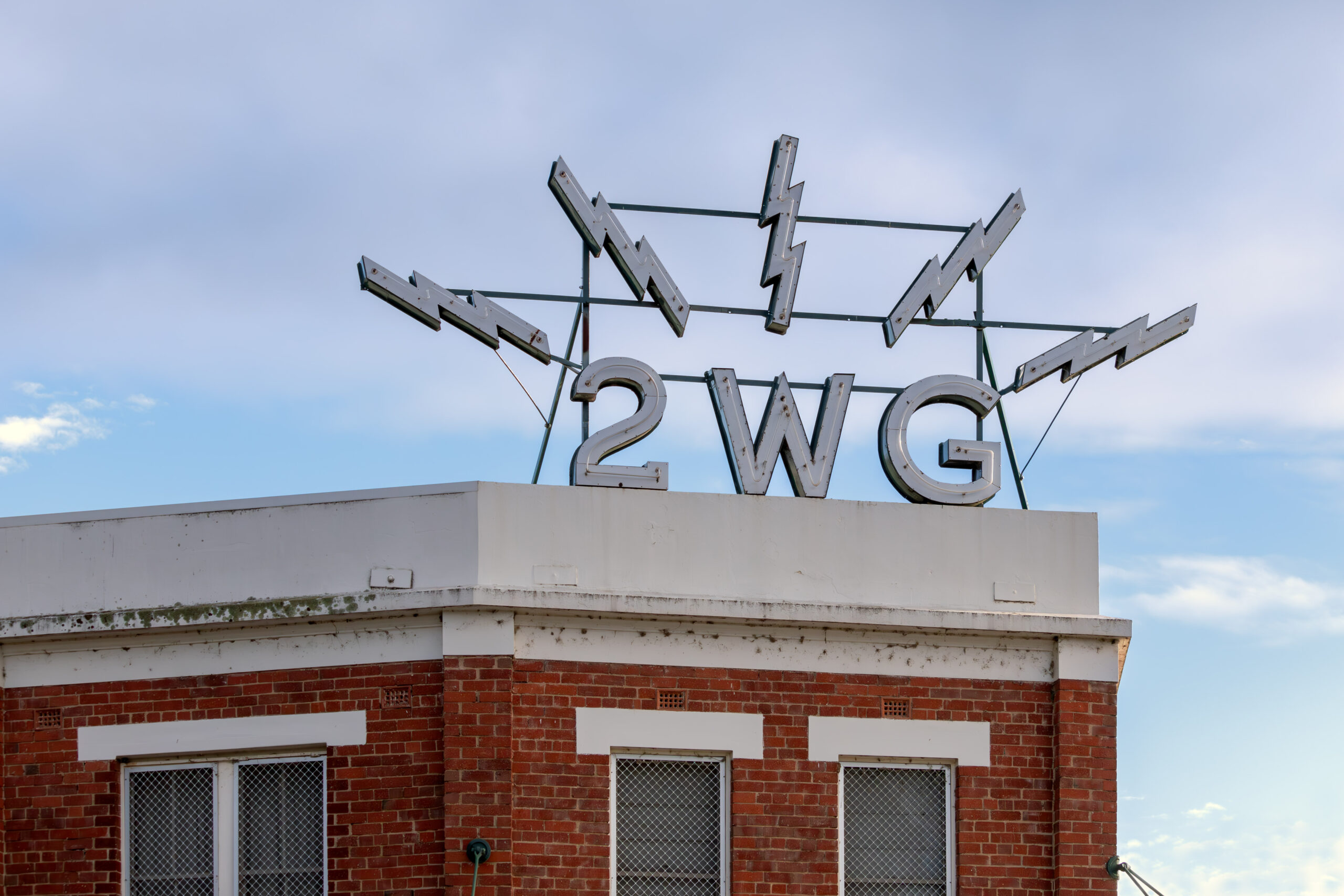
I spent a couple of hours wandering the streets, drinking coffee and making photos before heading back to meet the others for breakfast.
Wagga Wagga Art Gallery
After breakfast, which was actually closer to lunch time, we packed up and headed off to the Wagga Wagga Art Gallery. On exhibit at the moment is the touring exhibition of the Wynne Prize, an annual competition for landscape painting and sculpture run through the Art Gallery of NSW. The prize was first awarded in 1897, and this is the first time the exhibition has toured.
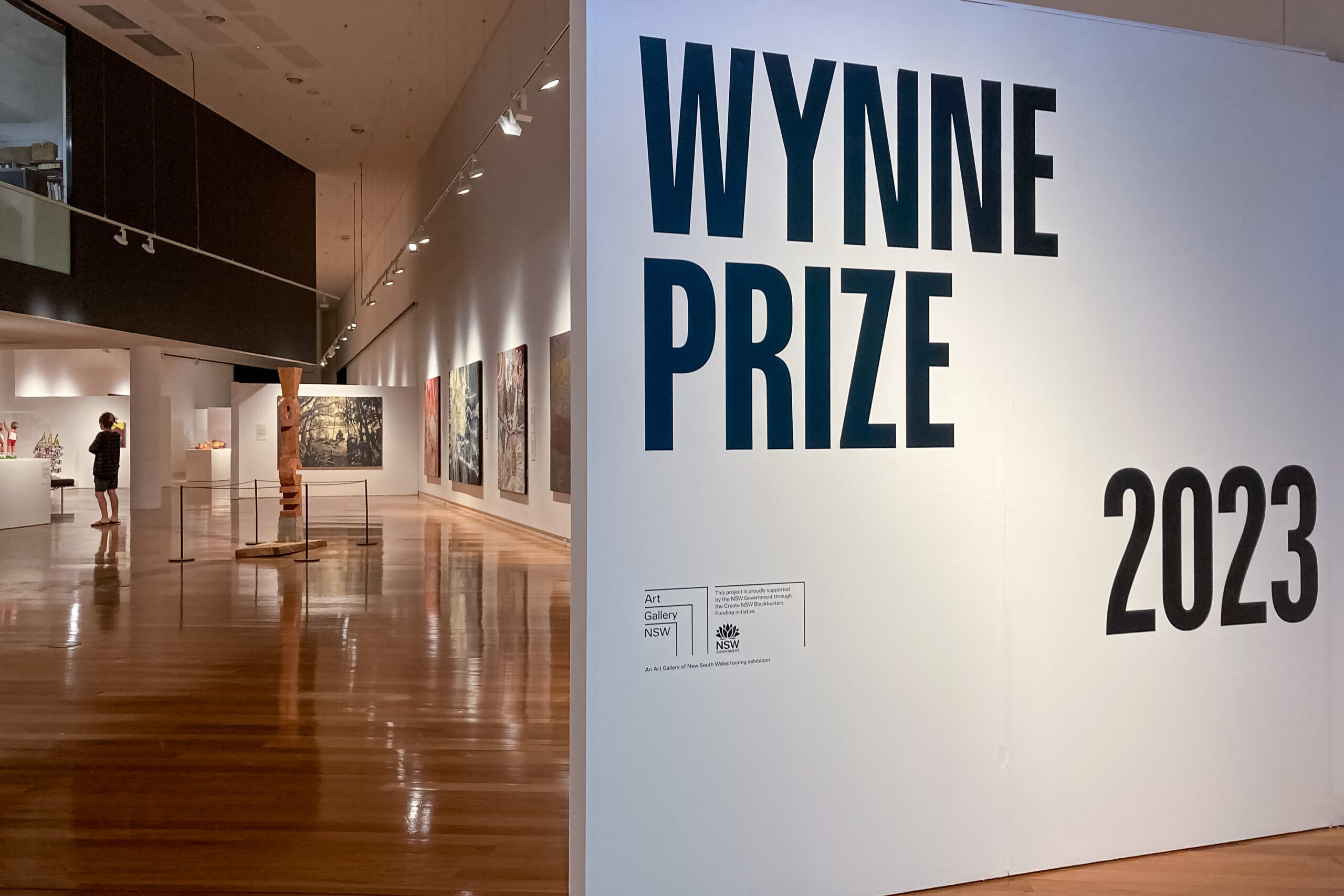
The artworks cover many concepts of landscape, from urban streets to remote wilderness.
The winning entry was a huge acrylic painting by Zaachariaha Fielding called Inma, which “depicts the sounds of Mimili, a small community in the eastern part of the Anangu Pitjantjatjara Yankunytjatjara (APY) Lands” in what is now called South Australia.
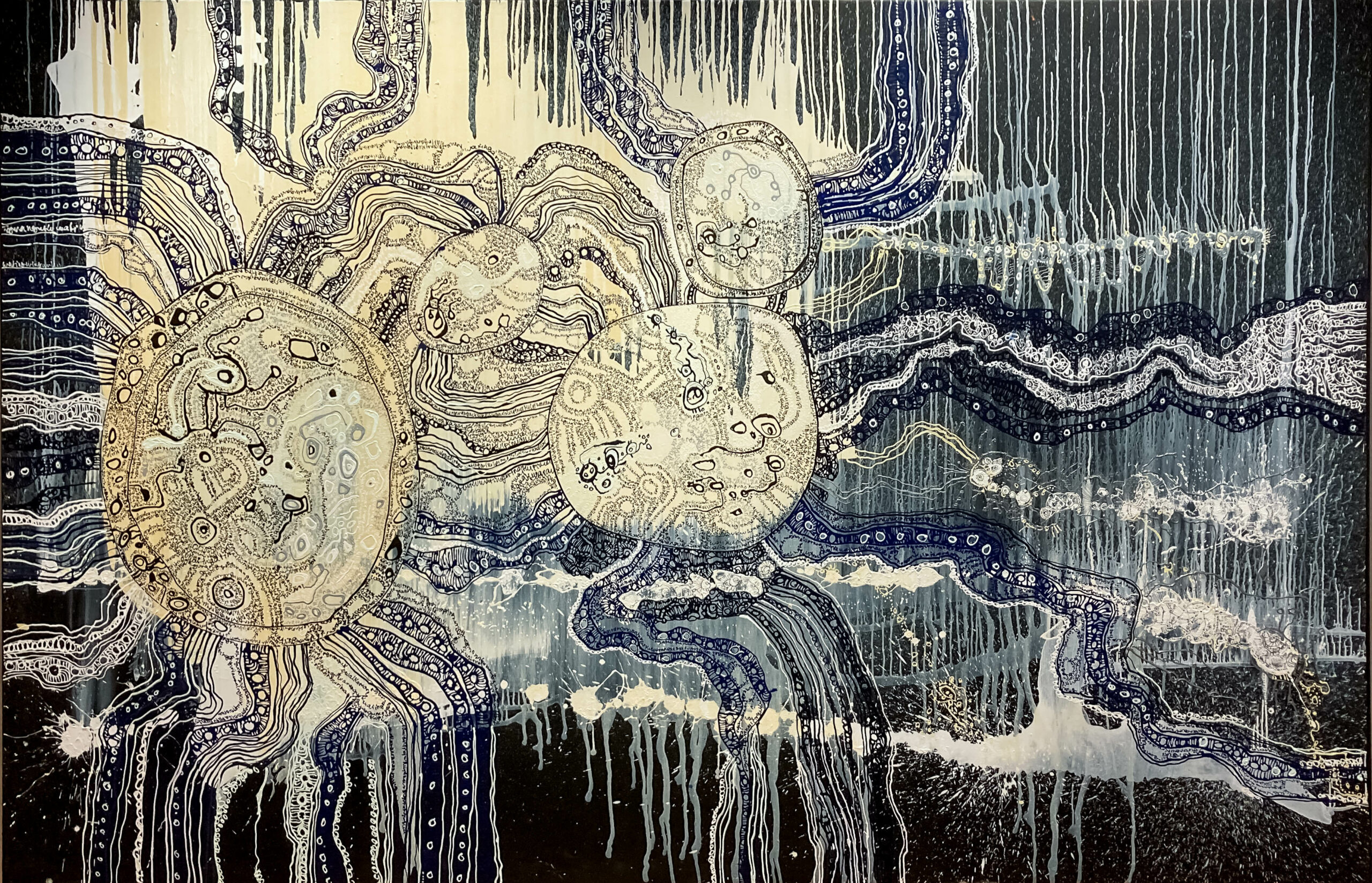
The painting “represents Mimili through a childhood lens, recalling observations of inma (song and dance) and movement”.
It was spectacular!
Another work I loved was called EVERYTHING STINKS UNDER A STINKING HOT SUN, EVERYTHING GROWS UNDER A SEXY SEXY SUMMER SUN (after a pile of dead rats on a lovely flower bed in the rocks), by Jason Phu.
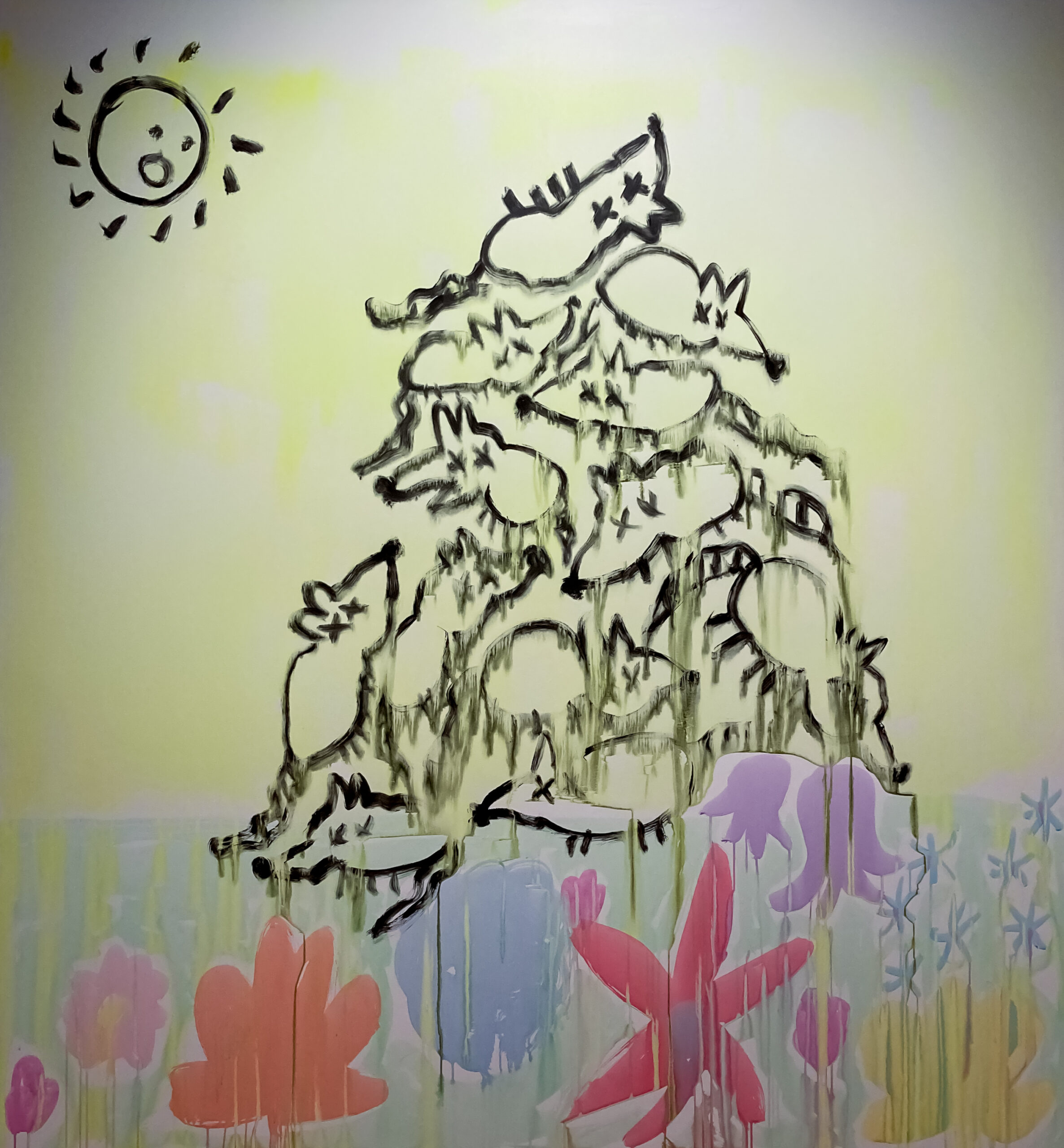
This painting recalls a time the artist was working as a kitchen hand in The Rocks in Sydney. The local rats became addicted to the coffee grounds in the restaurants’ bins.
“It made them aggressive and gave them super-rat strength. All the businesses in the area had to put their grounds in steel-trap bins for six months to wean them off their addiction. The city installed nice garden beds along the street at some point and the rats used to nap in them.“
I was intrigued by “super-rat strength” resulting from coffee grounds.
And my building-loving eye was drawn to Christopher McVinish’s Christmas in Katoomba, a portrait that reflects “the magic in the everyday”.
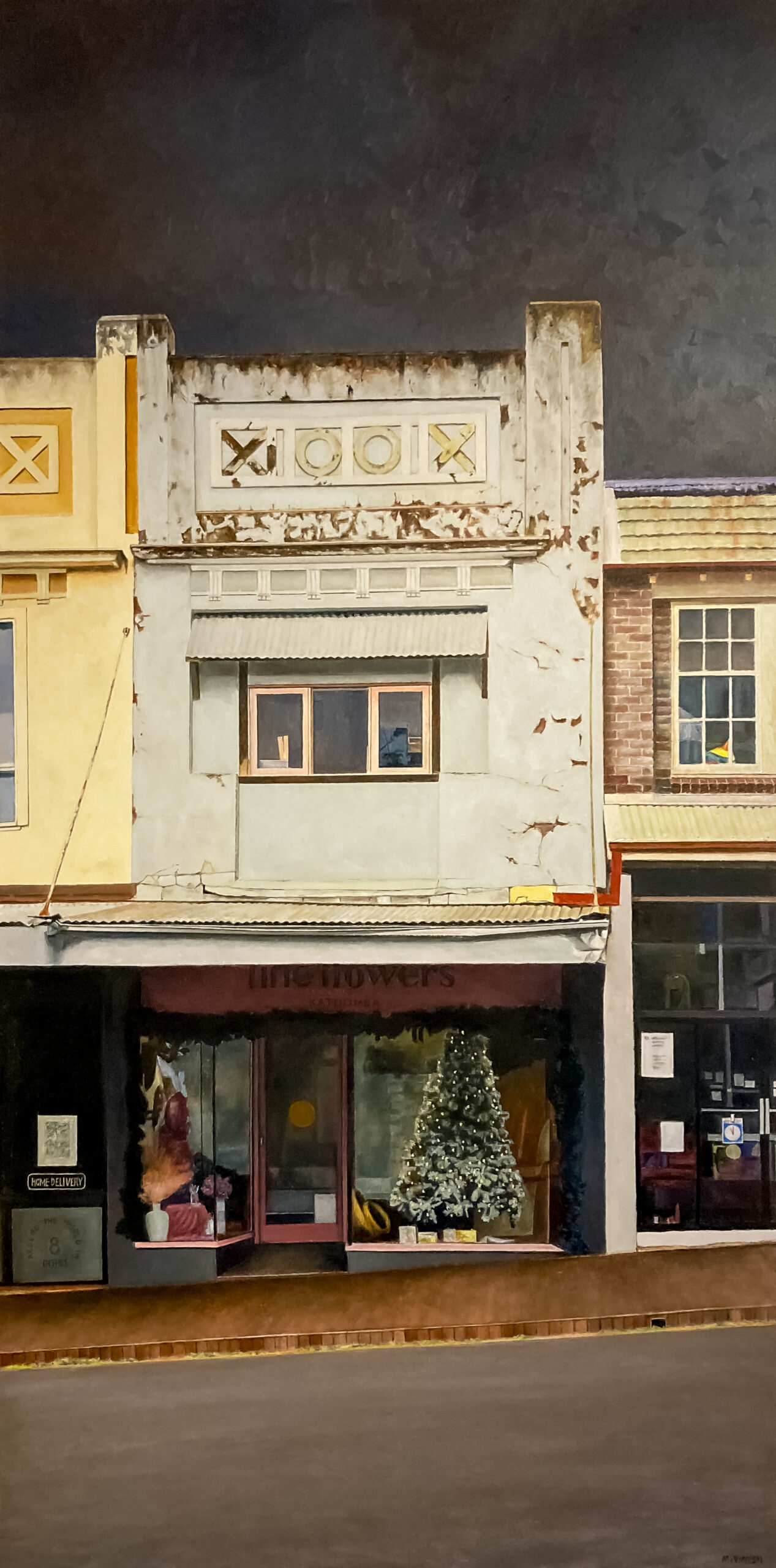
My favourite thing to photograph. I love it!
National Art Glass Gallery
The National Art Glass Gallery next door has a huge collection of art glass. Currently on display is an exhibition called Shattering the Glass Ceiling: Women Artists in the National Art Glass Collection.
This exhibition notes that the studio glass movement was dominated by men when it was established in the 1960s but since then, women have also made careers and become recognised in this field.
This is Kathy Elliott’s Blue Cast Glass Relief, which is very cool.
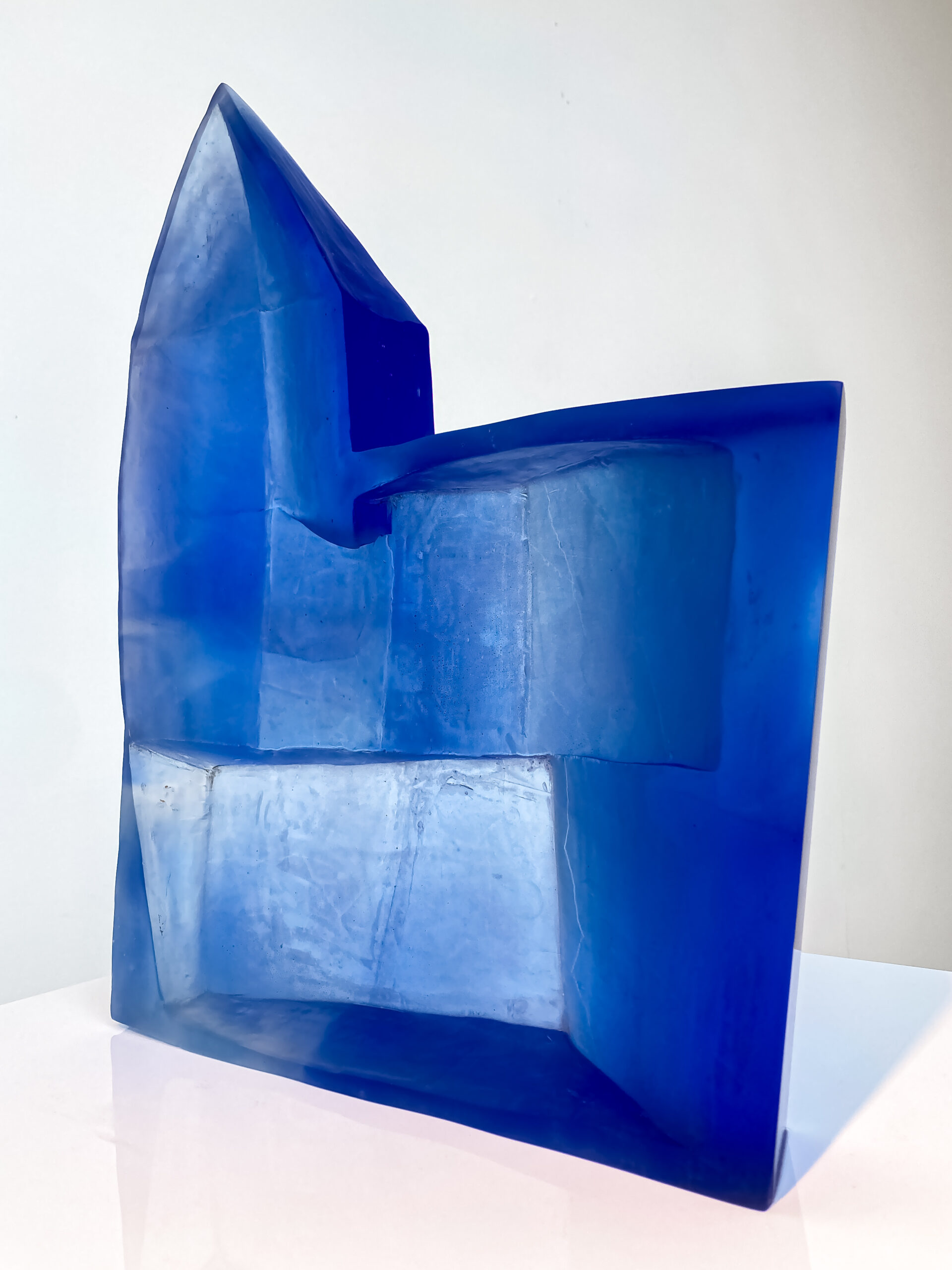
The exhibit tells us that Kathy Elliott works with her husband Ben Edols, who uses hot glass blowing techniques to blow the structure. Kathy then uses cold working techniques to cut it and create the surface of lines and planes.
My favourite piece in this exhibition was Judi Elliott’s Inside House Outside House, which is so eye catching.
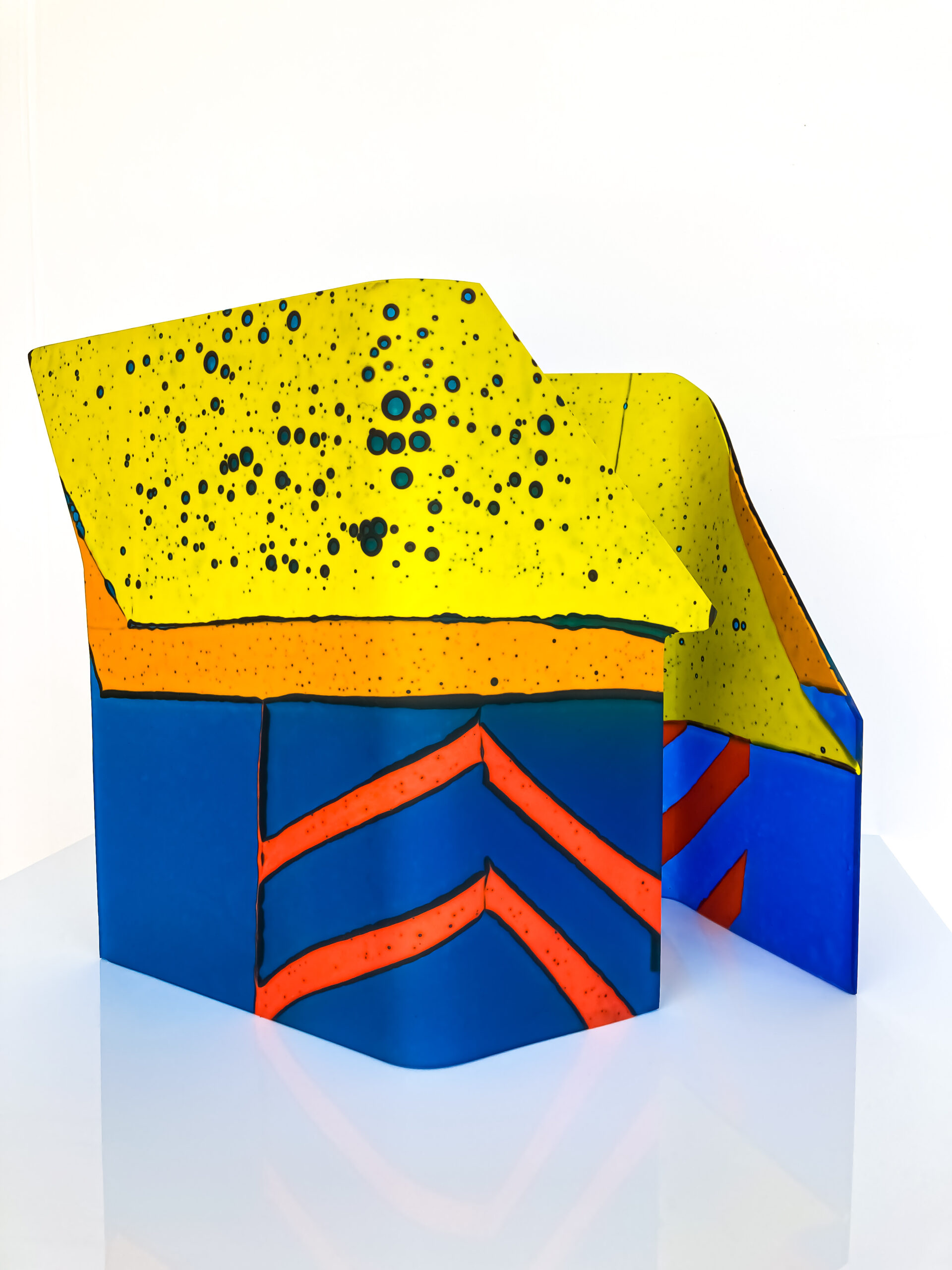
It wasn’t until later that I learned Judi Elliott had owned one of Enrico Taglietti’s celebrated homes in Canberra. (Taglietti was the designer of many structures in Canberra including the Dickson library from my last post. I wasn’t aware of this house until one of the cousins at the family get-together on the weekend told me about it. When I googled it the first article that came up mentioned Judi Elliott had purchased it.)
It’s a small world.
And just in case I didn’t get enough blue, this is Blue Lady by Sallie Portnoy.
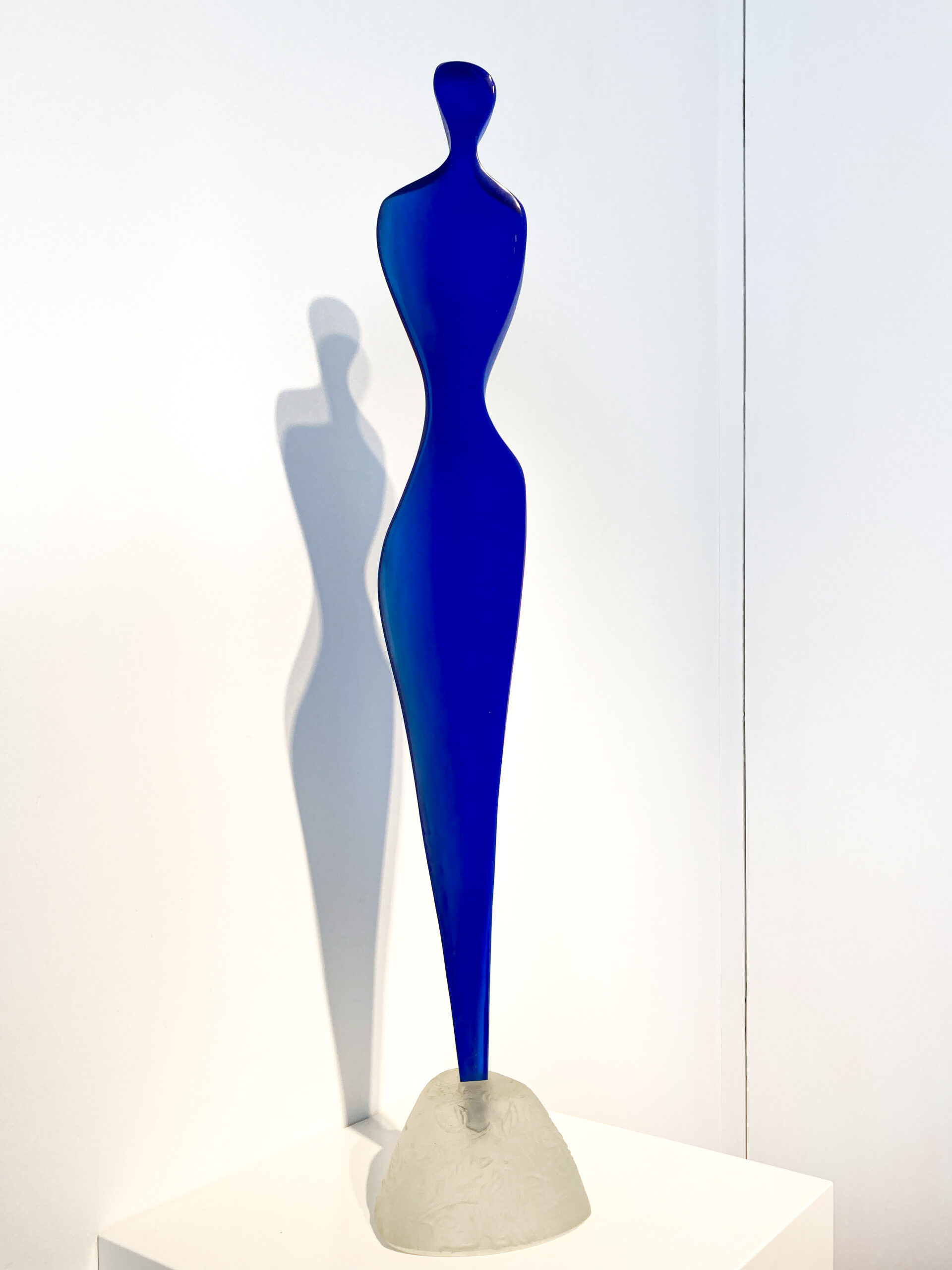
Alongside this exhibition was Lyndall Phelps’ exhibition Science of Common Life, which, again, considers women’s contributions to art. It transports us “to both laboratory and sewing room, to consider through a gendered lens, the value placed upon human labour and creativity”. The exhibition notes that
Until recent times the discipline and practice of science was largely considered the domain of men—a pursuit which championed rational thought and empirical enquiry. Believed to be lacking in such attributes, women were largely excluded from this male world of achievement and recognition. Their place was inside the home, attentive to the needs of others.
Using the fine domestic needlecrafts of crochet and stitchery [Phelps] pays tribute to the skill and creativity of women. Exquisitely crafted, domestic scale forms are playfully entwined with art glass from the gallery’s collection alongside laboratory glass flasks and beakers, microscope slides and watch glasses. In scale and arrangement, they suggest both the subject and practice of science; and the manifold, cellular, repetitive excursion of life itself.
The glass bulbs in Science of Common Life: Experiment 5 resemble bulbs from a science lab, but these are embellished with glass beads and satin ribbons.
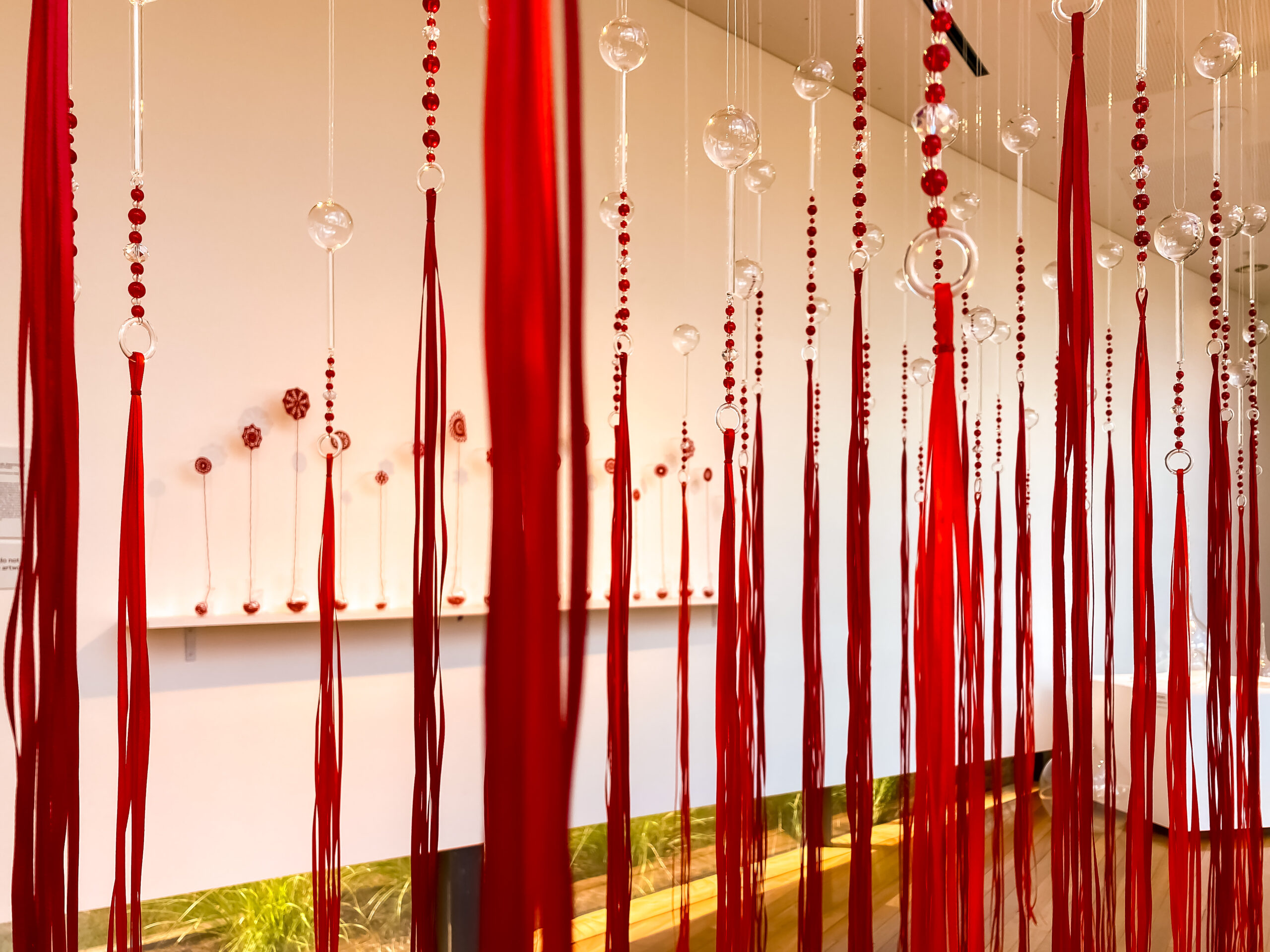
The description of this piece notes:
Created in China during the early 1600s, satin ribbons first appeared in Europe around 100 years later. At this time, they were used primarily as embellishments on clothing and furnishings in wealthy homes. Later they were used in ribbon embroidery, where thin ribbons took the place of thread.
There’s a similar theme in Science of Common Life: Experiment 2, which highlights embroidery thread and glass round bottom flasks.
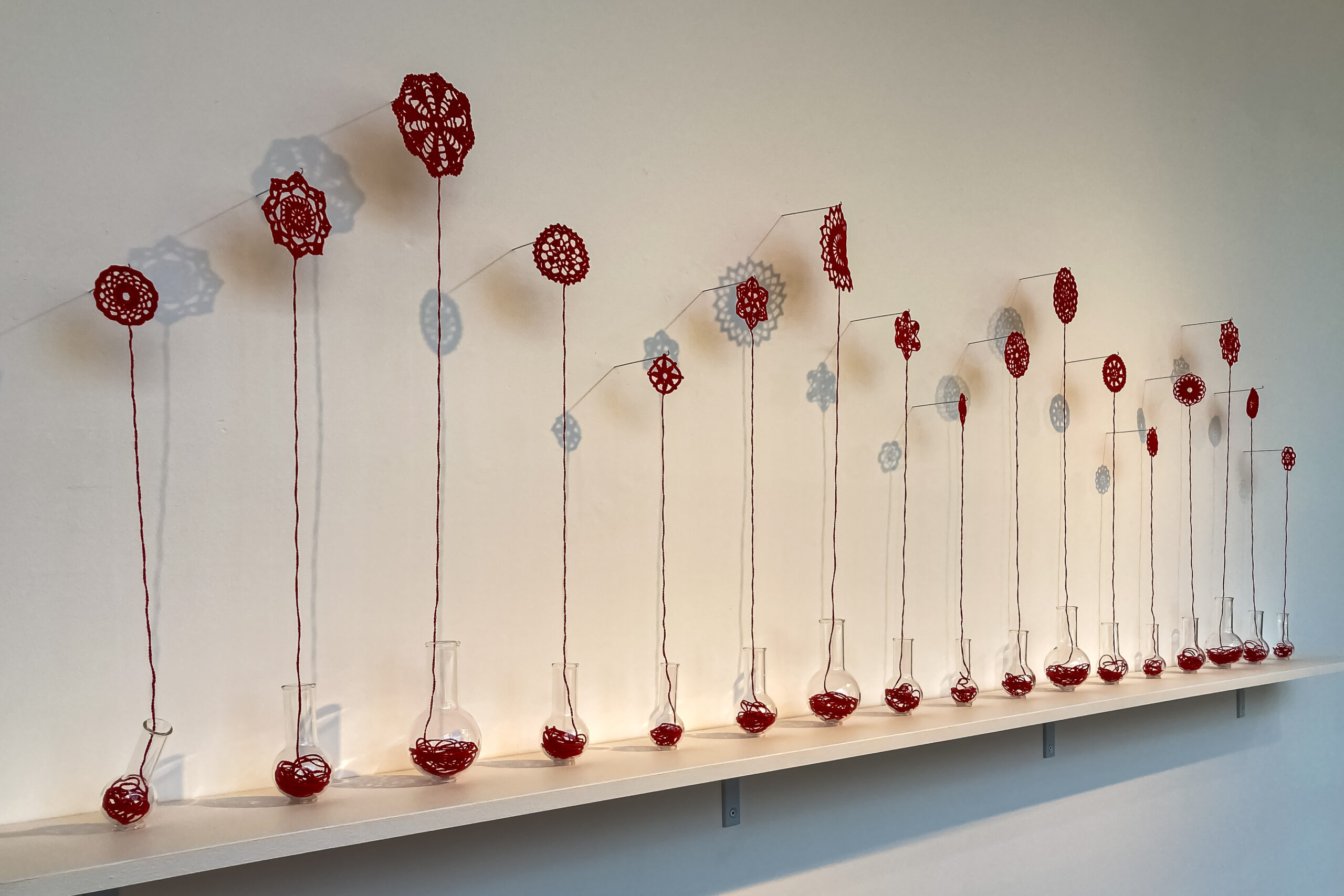
The description notes how historically, women would undertake handcrafts with their female family members and friends. The skills would be passed down through the female line, with girls learning from their mothers grandmothers and aunts. In this spirit, the artist’s sister-in-law, Margaret Phelps, made the crochet motifs in Science of Common Life: Experiment 2. It goes on to say
Each motif appears to be either unravelling into a round bottom flask or descending from it. The spherical shape of these flasks, which have been designed to provide uniform heating and stirring of liquids, echo the work of Denise Sullivan, an artist whose work is also part of the National Art Glass Collection.
It was an interesting exhibition, and the whole glass gallery was amazing. This isn’t an art form I’d ever thought about so I really enjoyed seeing the range of ways glass can be used to create art.
Farewell, Wagga
Before we left, I had a final few moments to check out (the back of) the Civic Theatre.
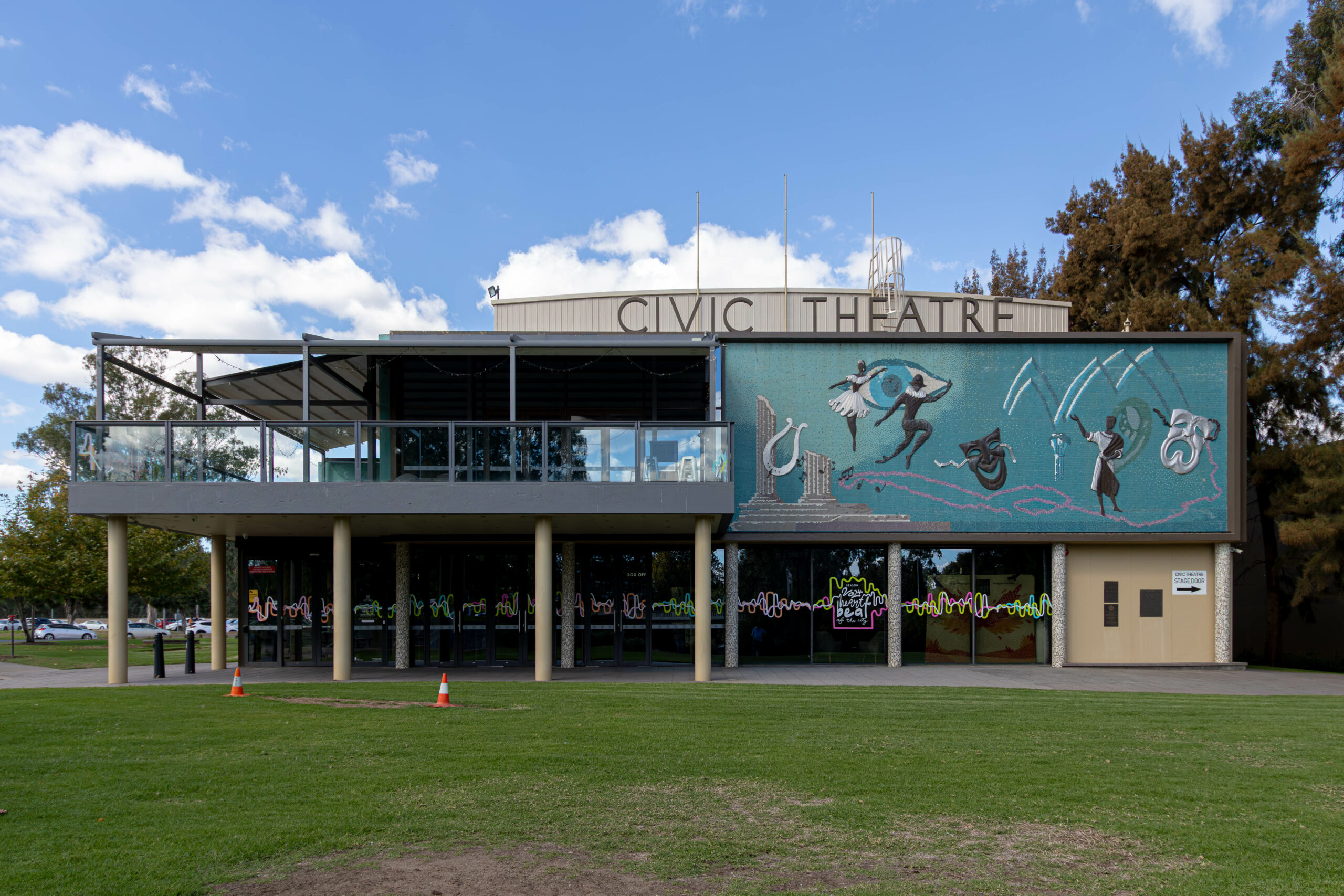
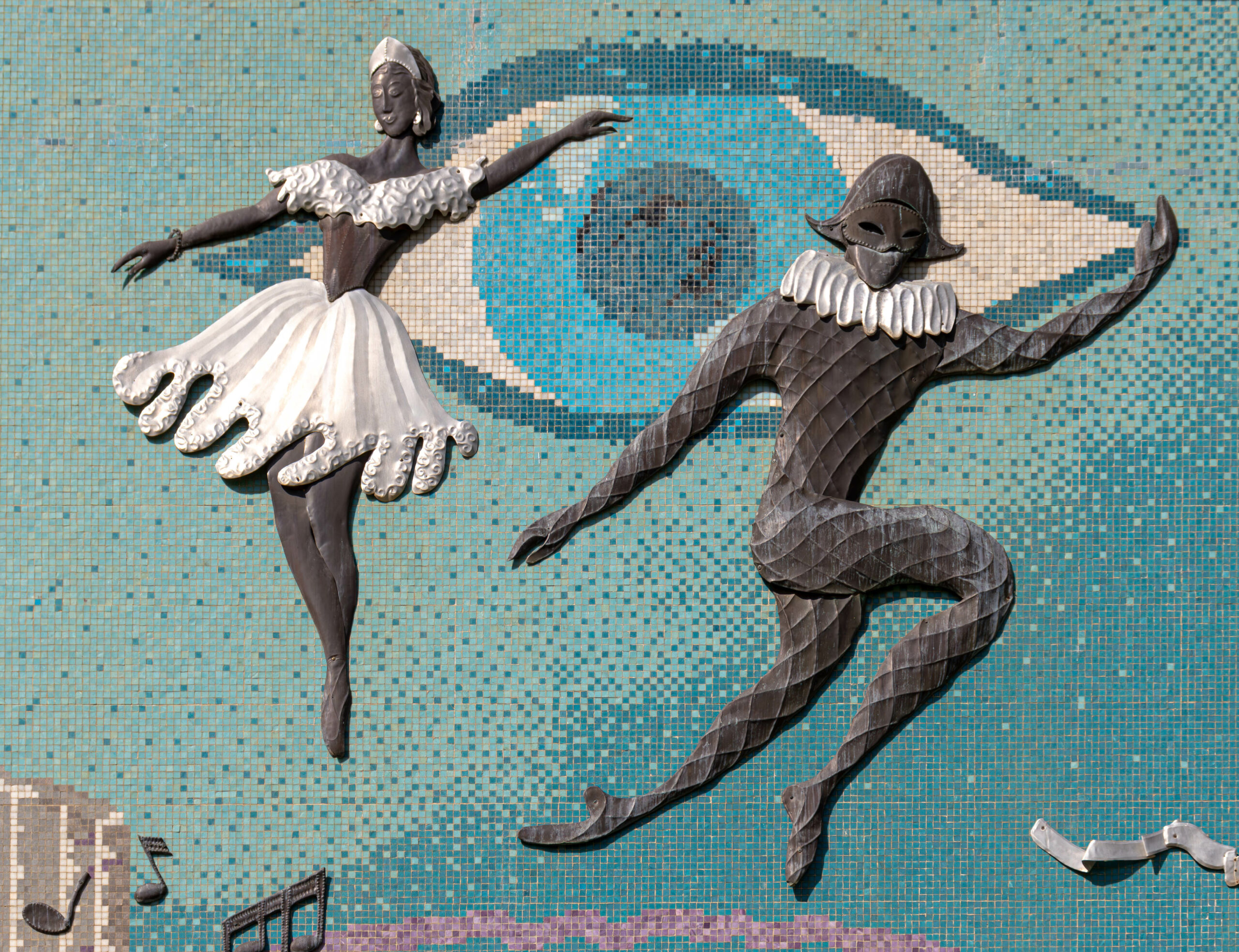
Our destination was Tumut, a bit over an hour’s drive away, where we’d be meeting Slabs’s family.
The drive took us along the Snowy Mountains Highway.
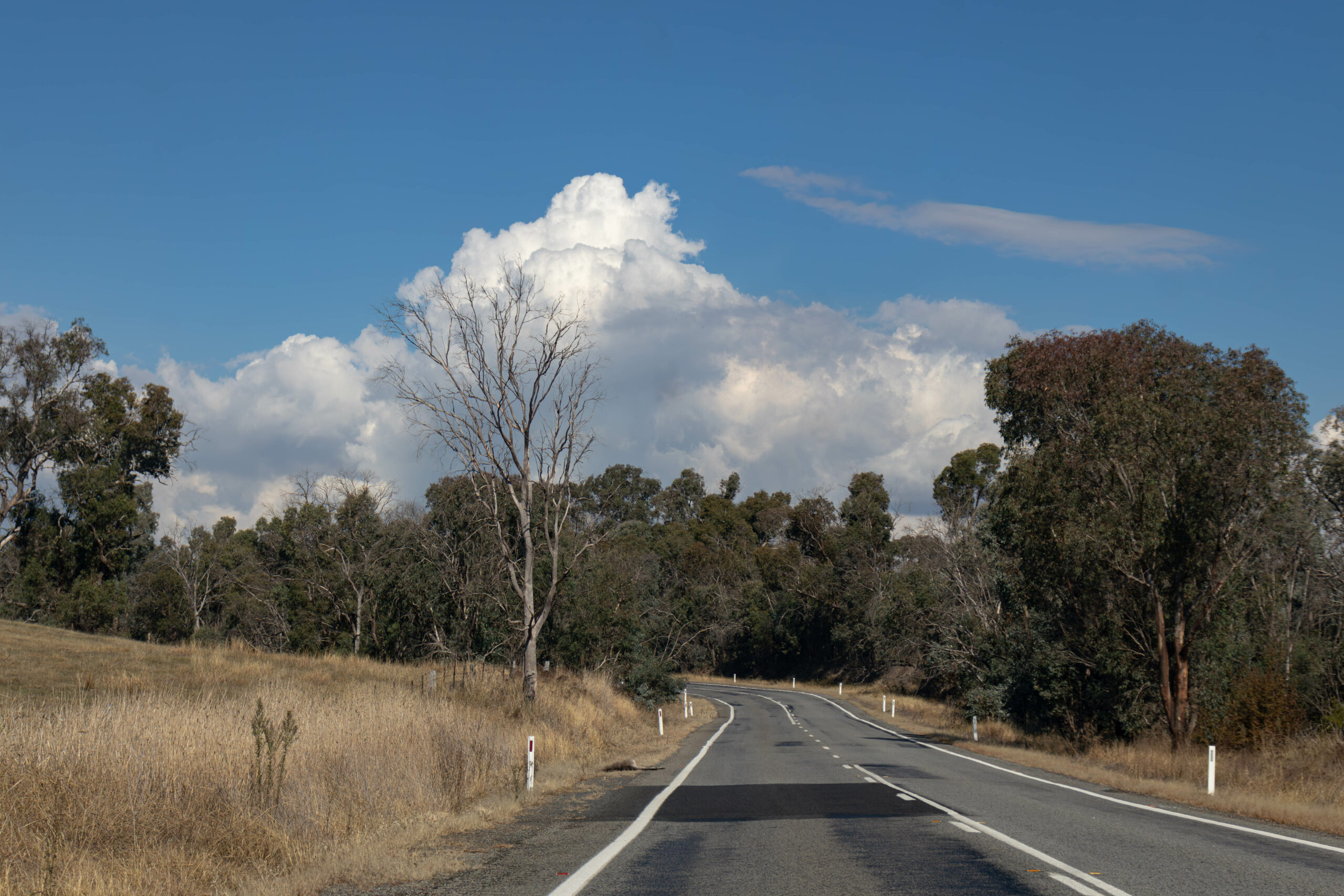
We stopped at Adelong, planning to have lunch and check out the sculpture trail, but by the time we arrived, none of the cafes were open.
So we continued the drive into Tumut to get ready for the weekend.